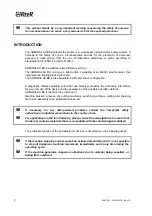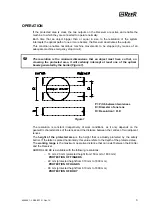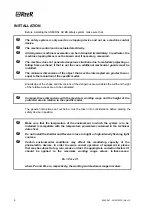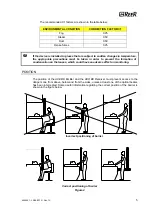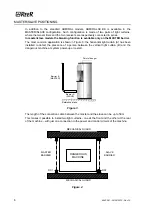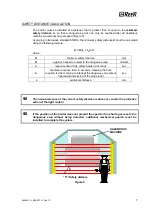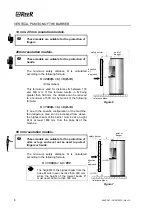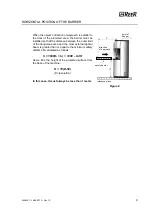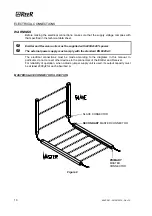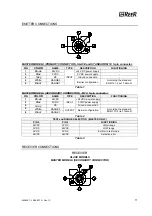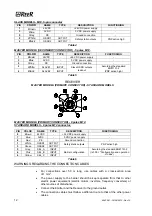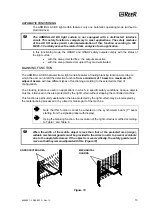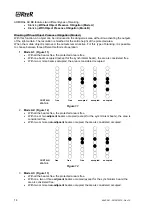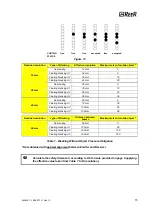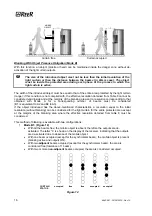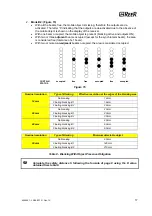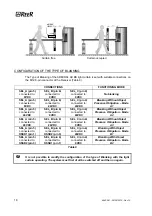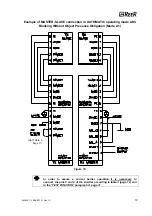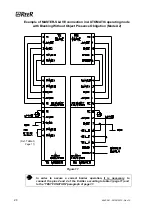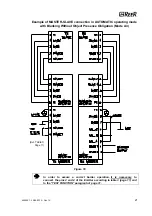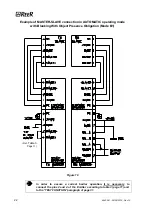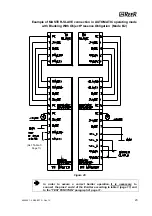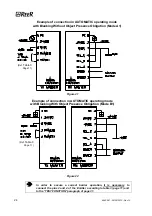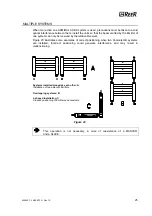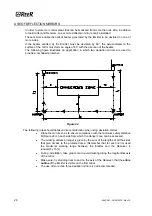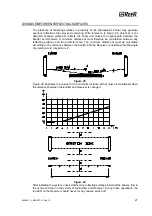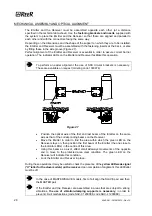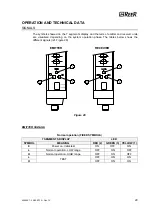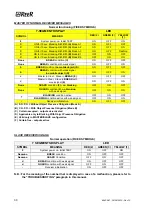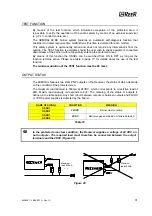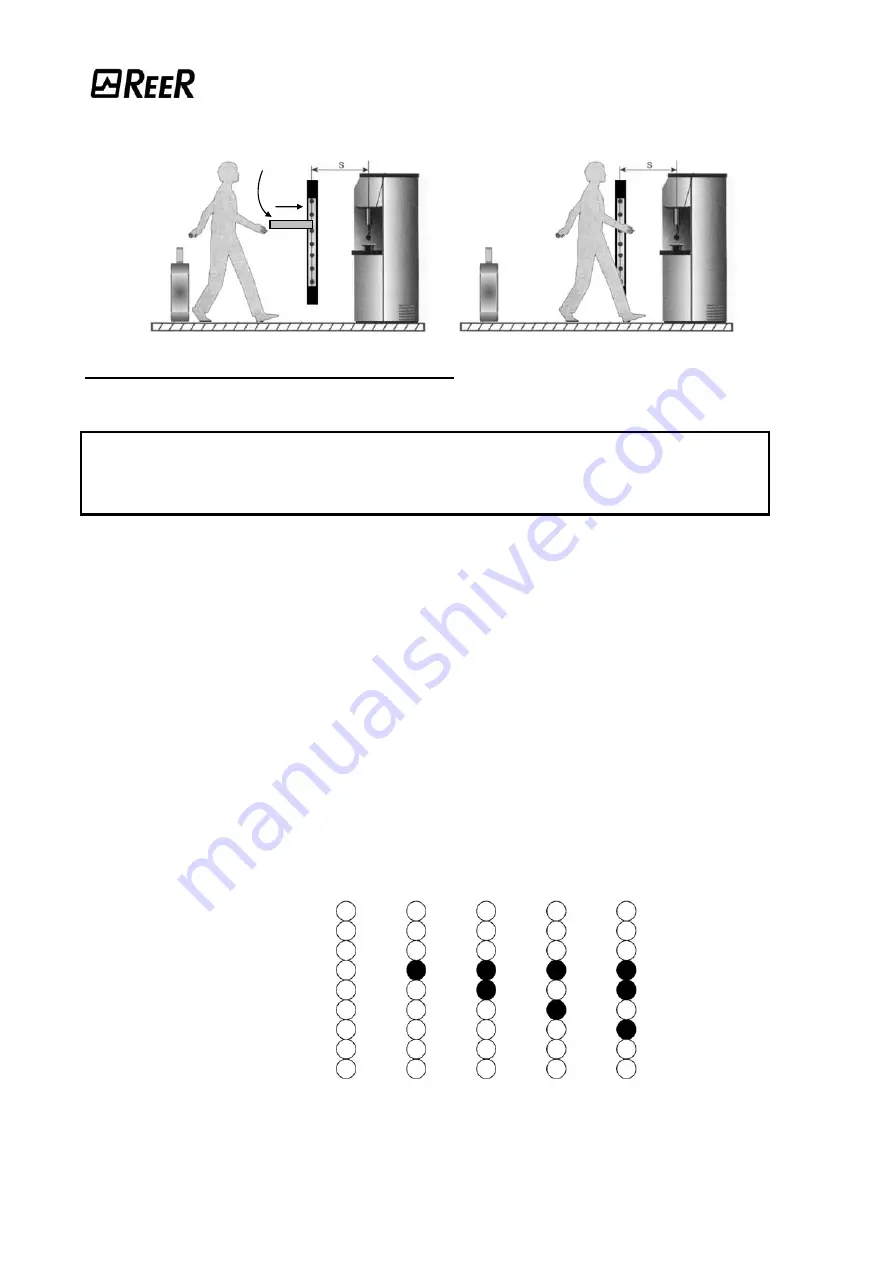
16
8540581 - 29/09/2010 - Rev.10
Curtain
free
Curtain
occupied
Blanking With Object Presence Obligation (Mode B)
With this function, an object (mobile or fixed) can be maintained inside the danger zone without de-
activation of the light curtain outputs.
The size of the introduced object must not be less than the initial resolution of the
light curtain or than the distance between the beams (in 90mm case). The object
must be inside the protected area during each phase of the process in which the
light curtain is active.
The width of the introduced object must be equal to that of the entire area protected by the light curtain
(range); if this condition is not complied with, the effective resolution obtained from Table 8 cannot be
considered valid inside and at the margins of the blanking area and a resolution corresponding to that
obtained with Mode A for a corresponding number of beams must be considered
(B1 is equivalent to A2 and B2 to A3).
If the object introduced has the above-mentioned characteristics, a resolution equal to the initial
resolution (without blanking) can be considered for the light curtain for the entire protected area except
at the margins of the blanking area where the effective resolution obtained from table 8 must be
considered.
This method of blanking is available with two configurations:
1.
•
With all the beams free, the mobile object is absent, therefore the outputs are de-
activated. The letter “b” is shown on the display of the receiver, indicating that the outputs
are de-activated due to absence of the mobile object.
•
With one beam occupied (except for the synchronism beam), the mobile object is present
(blanking active and outputs ON).
•
With
two
adjacent
beams occupied (except for the synchronism beam), the area is
considered free (tolerance of 1 beam).
•
With two or more
non-adjacent
beams occupied, the area is considered occupied.
CURTAIN
occupied
free
free
occupied
occupied
STATUS
Figure 14
MOBILE
OBJECT

